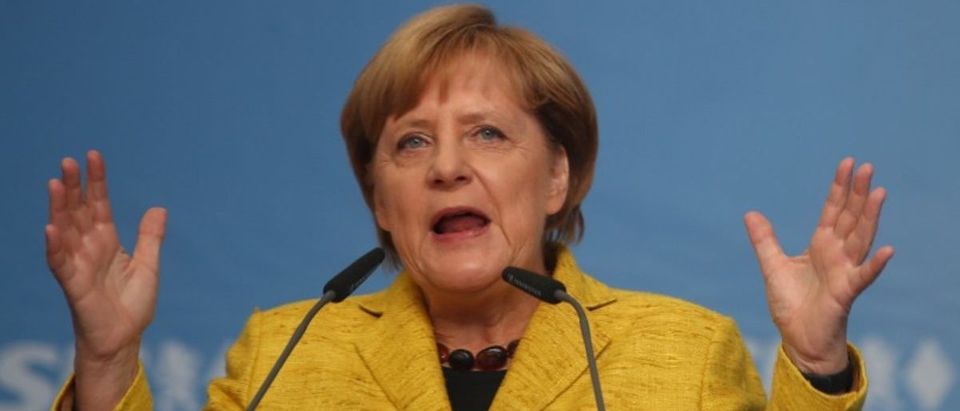A recent report claims Germany is not on track to meet its goal to reduce carbon dioxide emissions 40 percent by 2020, despite the country spending billions on green energy subsidies.
German Chancellor Angela Merkel faces election on Sunday, and even though she’s expected to win, the inconvenient report from the group Agora Energiewende about her government’s global warming goals probably won’t do her any favors.
But don’t expect German Chancellor Angela Merkel to back down. In fact, she said a couple days ago her government would “find ways to get to the 2020 climate target,” which included the continued shut down of coal-fired power plants.
“I doubt that much will change in Germany in the short term,” Benny Peiser, director of the U.K.-based Global Warming Policy Foundation, told The Daily Caller News Foundation.
Despite the coast, “the vast majority of Germans remain overwhelmingly in favour of continuing the Energiewende,” Peiser said, referring to Germany’s energy transition plan.
The “Energiewende” is only one part of Germany’s plan to decarbonize its economy. Through Energiewende, Germany hopes to move away from fossil fuels, especially coal, towards solar and wind power.
Agora Energiewende reported the missed emissions target “won’t be a near miss but a booming failure,” in a recent report. Coal generated 40 percent of Germany’s electricity in 2016 while wind and solar supplied much less.
“The green energy fiasco, however, is not an election issue at all — not least because there is an all-party consensus on what may eventually turn out to be one of Angela Merkel’s most disastrous policy decisions,” Peiser said.
German began subsidizing green energy source in earnest in 2011 after the Fukushima Daiichi nuclear plant meltdown. Merkel began an aggressive shift towards solar and wind power to replace its nuclear plants.
But it’s cost them.
Germany has spent $780 billion in recent decades, Bloomberg reported, and it’s not enough to get them toward their national goal of cutting carbon dioxide emissions 40 percent by 2020.
“We expect Energiewende cost to fall starting from early 2020 – renewable power from newly build wind and solar is now the most cheapest power in Germany,” Christoph Podewils, Agora’s communications director, told TheDCNF.
“Of course we have lot of challenges – market design, regulation, grid expansion and enhancements, acceptance, de-carbonising of heating and transport – but cost is no issue anymore,” Christoph said.
However, average Germans are feeling the pain. Electricity costs are about three times higher than in the U.S., driven mostly by increases in energy taxes to pay for green energy. Heat is so expensive it’s called “the second rent.”
German industry, on the other hand, is expempt from green energy laws out of fear they would no longer be competitive. That’s shifted more of the cost onto residents and smaller businesses.
German emissions are down 27 percent from 1990 levels, which is ahead of other European countries, but still behind what they need to meet their goal.
Emissions have come down all while coal plants have thrive. Coal, especially lignite, is a cheap source of fuel in Germany that’s competitively subsidized green energy sources. Coal is also a more reliable energy source since it doesn’t rely on the sun and wind.
“Germany’s CO2 emissions in the electricity sector haven’t decreased since 1995,” Peiser said. “The country is almost certain to fail its climate targets by 2020 by a wide margin.”
“All that renewables have achieved is to replace zero-carbon nuclear and low-carbon gas power generation while coal power generation is increasingly competitive and thriving,” he said.
Follow Michael on Facebook and Twitter
All content created by the Daily Caller News Foundation, an independent and nonpartisan newswire service, is available without charge to any legitimate news publisher that can provide a large audience. All republished articles must include our logo, our reporter’s byline and their DCNF affiliation. For any questions about our guidelines or partnering with us, please contact licensing@dailycallernewsfoundation.org.


